MUSEUM: MuAC: A Reflection on Contemporaneity
The National Autonomous University of Mexico (Universidad Nacional Autónoma de México-UNAM) opened its doors, as of 27 November 2008, to the first cutting-edge museum in the country: the University Museum of Contemporary Art, MuAC, a space poised to become one of the most visible centers of knowledge and generation of artistic expressions and visual culture in Mexico and the whole of Latin America, in addition to its projecting itself as a protagonist of the categorical change in the mission of museums at the global level.
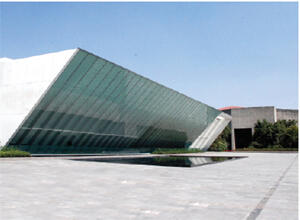
The project establishes innovative programs aimed at generating knowledge, fostering education, inducing the creation of significant experiences and stimulating aesthetic enjoyment. Parallel to this, it contemplates contributing to the country the most comprehensive public collection of contemporary art ranging from the second half of the past century to the present.
The new museum venue is equipped with state-of-the-art technology and meets the characteristics of the best contemporary art centers and museums at the international level, having been conceived from an integral perspective (architectonic, museographic, museological, curatorial, educational and interpretative). The project devised by Mexican architect Teodoro González de León (Honorary Doctorate awarded by UNAM, 2001) responds to a rigorous analysis of the requirements of a museum for the third millennium, always in consonance with the spirit of excellence and innovation that characterizes UNAM.
This new institution creates a paradigm of the cultural reality of the country, a new visual scenario that invites to reflection and analysis. It is only fair to give credit to the tenacity of the rector, Dr. José Narro Robles, and of the Cultural Dissemination Coordinator, Master Sealtiel Alatriste, for completing this project, which had its origin in the previous administration. Graciela de la Torre, head of UNAM´s Visual Arts Department, and an Advisory Board have currently appointed Guillermo Santamarina Curatorial Coordinator, and José Luis Barrios, Academic Coordinator; they will be the visible face of this venture which has been rightly termed “the post-museum”.
Arte al Día had the chance to talk with Guillermo Santamarina and José Luís Barrios about MuAC’s position in the international scene, about its objective, the programs and curatorial lines they will implement, as well as about the lines of work that differentiate MuAC from the traditional museum models and the relationship between Latin and American museums.
INTERNATIONAL SCENE
José Costa Peuser. MUAC is, decidedly, a museum project whose dimensions place it on the international scene. What is the museum’s impact, as a cutting-edge institution, on this scene?
Guillermo Santamarina. Basically, it is one of the spaces which can generate the most efficient approach network, particularly one oriented toward the south of the continent. To this end, the museum’s relationship and obligation to UNAM is not only to open its doors to the university community, but also to work with it through interdisciplinary projects.
Iván Sanchezblas. When we talk about generating a network to approach the south, can we assume that the museum has a responsibility in terms of translating its “impact” into specific strategies within an international network?
José Luis Barrios. Yes, above all in the sense of trying to generate a relationship with the south that does not presuppose forms of exclusion in the modes of art circulation, particularly in relation to the north or to the hegemonic powers that dominate the practice of contemporary art. It is rather a question of the south generating a sort of location. There is a geography, a place; in this case, Mexico City.
We believe that what has been accomplished in the field of contemporary art in Mexico provides a suitable space, a good geography to generate another kind of relationship by means of spaces that seek to produce discourses that are simultaneous and parallel to all existing discourses. In the field of contemporary art, it is obsolete to negotiate the idea of global and local, the idea of identities, of the international, because what is important is to acknowledge one of the most visible consequences of globalization: the exchange flows.*
SOUTH – NORTH NEGOCIATION
IS. From its stand in the south, our journalistic practice detects, literally, a dominant market, a northern market, so to speak. Where are its bases of action located? Where or what are the lines of approach and negotiation between this strategic base of action in the south, and the hegemonic reality, that exerts its influence from the north?
JLB. If I understand this right, your question-commentary may be posed in the following way: If capital is fundamentally territorialized in economic hegemonic centers, in occidental economies, how does a geopolitical strategy originating in the south have access to these global spaces?
I believe that, sadly, although this has implied some benefits specifically for art circulation, for the visibility of artistic practices, the condition of globality cannot be understood without considering the nomadic element inherent in capital. The truly nomadic element in contemporary society is capital, and in this respect, to propose, once again, the pattern of a market based in the territory of the northern hegemonic centers, does not, in my opinion, sufficiently take into account the very condition that advanced capitalism currently presupposes, i.e., its own displacement.
The current circulation and exhibition value in the contemporary art world makes it evident that fairs, biennials and all the like respond to the nomadic quality of capital; they respond to the visibility, circulation and distribution circuits that absorb the forms of art production. We may make reference to Basel, which has a specific power, or to Basel Miami, which has another specific power, or to the Venice Biennial; hegemonic centers of capital and power in relation with which, however, it is necessary to understand that one is not an ‘other’ according to this logic of capital. I will explain it in a way that is perhaps too theoretical and very deleuzian, but in the current state of globalization, what we have is capital flows and differential effects. The flow is predominant, and the differential effects are determined by the flow. The absolute form of money is the flow; in this respect, when you think, for instance, of the practice of contemporary art and the way in which a strategy originating in the south is positioned, that is, when reference is made to your capacity to produce capital differentials, you are referring to the place, the seat of action. Capital differential is understood as the way in which the condition of being “south” produces tensions when faced with capital flows. And this is not like saying “we are an other.” We are differential effects of the flow producing tension on the flow.
Currently, the notions of art geographically located in Latin America or in the south should rather be considered in terms of that strategy; of the way in which you negotiate your differential effect on the flows and not on how you generate an otherness differentiated by the center. This implies searching for practices that are negotiating with capital flows in terms of their production of differential effects.
PROGRAMS’ PROFILE
IS. What is the profile of the programs with which MUAC works?
GS. A very important aspect of the museum’s profile is that its programs focus on understanding, analysis and interpretation; an approach – particularly in the case of some generations – to influences that have been significant for the local contemporary production. And that relates not only to what occurs in the city, but also to what occurs in the whole country.
JBL. And it also relates to this almost ordinary, everyday tendency that shows that, at the present time, artists are not necessarily based in one place, producing art. One of artists’ frequent practices is that they move all over the world. The important thing is precisely this circulation value, which is one of the conditions of contemporary art.
GS. It is perhaps somewhat simple, viewed from the perspective that influences exist and that Mexican artists are considerably well-informed individuals. Access to information, access to the current artistic trends is almost immediate. What is pending is to take reflection a little bit further, to other planes of knowledge, particularly in the case of audiences that still adhere to very conventional ideas regarding the nature and the role of art in contemporary society.
CURATORIAL LINES
GS. The program contemplates certain lines that we shall explore and offer as point of departure of commissioned works, site-specific works, or works that visit the museum, in order that they all relate with that same trend. One of these lines, associated to ecology, focuses on recycling, an extremely important issue, especially in our city. Another practice to be explored is how artists conceive design in the historical and social conditions in which this reality is experienced. Or myths, another important point of departure, because they arrive and flow across a Western culture that is inconstant evolution; they flow in our own reality. I think these tension platforms will constitute a very interesting material, and a totally different proposal, a completely different offer.
MUSEUM MODELS
IS. Then it would also be necessary to talk about museum models. MuAC has so far defined its identity and objectives; but I imagine that, in the course of all the seminars that led to the structuring of its current identity, its organizers also had to detect the points in common with the European and American models, as well as the controversial ones.
GS. To become detached from the rigidity of the neutral model, an Occidental model that neutralizes the framework of the context for the presentation of artworks, continues to be a great problem. The construction, the design of this museum is still evidently related to the white cube.
One of the museum’s most important proposals is that it starts out from a modern, perhaps totalitarian model of what an exhibition or museological work are supposed to be, in order to generate, based on this, a critical discourse. We shall see to what extent this is possible.
JLB. It is important to understand that there is a very ambiguous component of a museum’s mission, namely, the production of criticism, but also the production of taste. And taste is the ideological factor or the mission par excellence of art. Then, the question is how to negotiate the boundary and the problematic place between taste and criticism.
GS. There is another factor, perhaps a very important one, related to this issue: it is the fact that we recognize in advance it is no longer the museum that legitimates or provides a new value to art objects, since this role is now played by the art market
LATIN / AMERICAN
IS. With regard to the American individual who consumes Latin American art, do you have any final comments?
GS. Something that has surprised me along these weeks, since the museum opened, and even before that time, is the expectation it has generated in the U.S.A. Many people have come to visit it, collectors and representatives from major museums, who independently of their interest in selling their own exhibitions, have come to Mexico to know the museum. This is an incentive to continue building and continue to generate our own models.
JLB. I think it is not the intention to become a platform that legitimates artists before the American market or any other market. With regard to the policy or discourse that we want to establish from the museum, I would summarize our position as follows. We will try to:
1) Generate narratives that are parallel to the ones that pretend to define, from the hegemonic centers of knowledge, what is to be understood by ‘Latin American’, as well as the history of Latin American contemporary art. This aspect has to do with a history-memory relationship.
2) Dislodge the vulgar notion of Latin American post-urban exoticism, which sells and is a great invention based on the fiction that Reyes Palma once very accurately termed, in a SITAC, the “Love’s a Bitch syndrome” of Mexican art. I think that to consider the idea of conceiving a Latin American identity in terms of post-industrial, post-modern and post-urban exoticism is, by now, absolutely aberrant.
The negotiation consists in conceiving production from the perspective of subjectivities, from a differential geographical location.
Latin America has to do with a production of sociability, of community spaces based on a common effort derived from the existence of subjectivities. The great ballast of exoticization is the annulment, in cultural forms and practices, of the condition of individualities and subjectivation. It is a totally hegemonic form produced even by the State itself.
GS. And it is the easiest one.
JLB. Certainly. We can gradually position these forms of differentiation; for this reason, this is a plural space for the production of what is “common”. We can construct something “in common”.
-
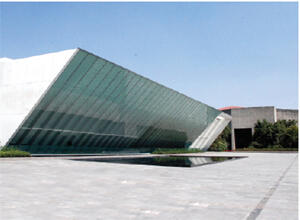 Museo Universitario Arte Contemporáneo (MuAC) Photo: Barry Domínguez Courtesy/Cortesía: Museo Universitario Arte Contemporáneo (MuAC)
Museo Universitario Arte Contemporáneo (MuAC) Photo: Barry Domínguez Courtesy/Cortesía: Museo Universitario Arte Contemporáneo (MuAC) -
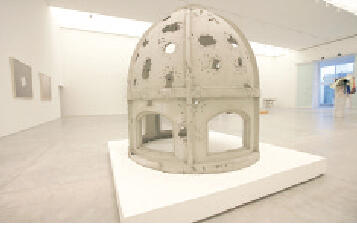 Museo Universitario Arte Contemporáneo (MuAC) Photo: Barry Domínguez. Courtesy/Cortesía: Museo Universitario Arte Contemporáneo (MuAC)
Museo Universitario Arte Contemporáneo (MuAC) Photo: Barry Domínguez. Courtesy/Cortesía: Museo Universitario Arte Contemporáneo (MuAC) -
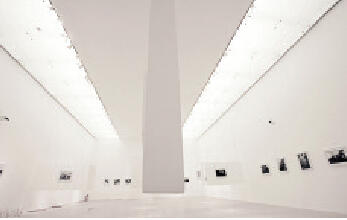 Museo Universitario Arte Contemporáneo (MuAC) Photo: Barry Domínguez. Courtesy/Cortesía: Museo Universitario Arte Contemporáneo (MuAC)
Museo Universitario Arte Contemporáneo (MuAC) Photo: Barry Domínguez. Courtesy/Cortesía: Museo Universitario Arte Contemporáneo (MuAC) -
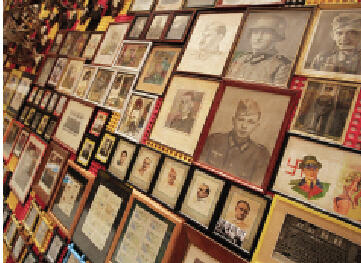 Museo Universitario Arte Contemporáneo (MuAC) Photo: Barry Domínguez. Courtesy/Cortesía: Museo Universitario Arte Contemporáneo (MuAC)
Museo Universitario Arte Contemporáneo (MuAC) Photo: Barry Domínguez. Courtesy/Cortesía: Museo Universitario Arte Contemporáneo (MuAC) -
 Museo Universitario Arte Contemporáneo (MuAC) Photo: Barry Domínguez. Courtesy/Cortesía: Museo Universitario Arte Contemporáneo (MuAC)
Museo Universitario Arte Contemporáneo (MuAC) Photo: Barry Domínguez. Courtesy/Cortesía: Museo Universitario Arte Contemporáneo (MuAC)




